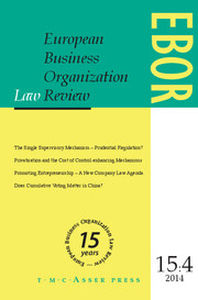Article contents
Reshaping Order Execution in the EU and the Role of Interest Groups: From MiFID I to MiFID II
Published online by Cambridge University Press: 20 December 2012
Abstract
The controversial and long-awaited Commission Proposals to revise the cornerstone Markets in Financial Instruments Directive 2004 (MiFID I) were presented in October 2011. The Proposals are currently going through the Council and Parliament negotiation process, and final agreement is expected sometime in 2013. This article places these important reforms (together, MiFID II) in context by examining the impact of MiFID I since its application to EU financial markets in November 2007, and by considering what MiFID I's impact suggests for the design of MiFID II. It considers how MiFID I reshaped the EU share trading marketplace and how the dominant interests which shaped MiFID I's regulatory design fared. It also examines how those interest groups are seeking to shape MiFID II, and the implications. It suggests that the influence of interest groups may have led to overly ambitious MiFID II Proposals which are excessively concerned with investment firm and trading platform interests, and not sufficiently focused on the overall efficiency and effectiveness of EU share trading markets. It calls for a more modest approach to reform, based on fine-tuning MiFID I.
- Type
- Articles
- Information
- European Business Organization Law Review (EBOR) , Volume 13 , Issue 4 , December 2012 , pp. 557 - 597
- Copyright
- Copyright © T.M.C. Asser Press and the Authors 2012
- 10
- Cited by


